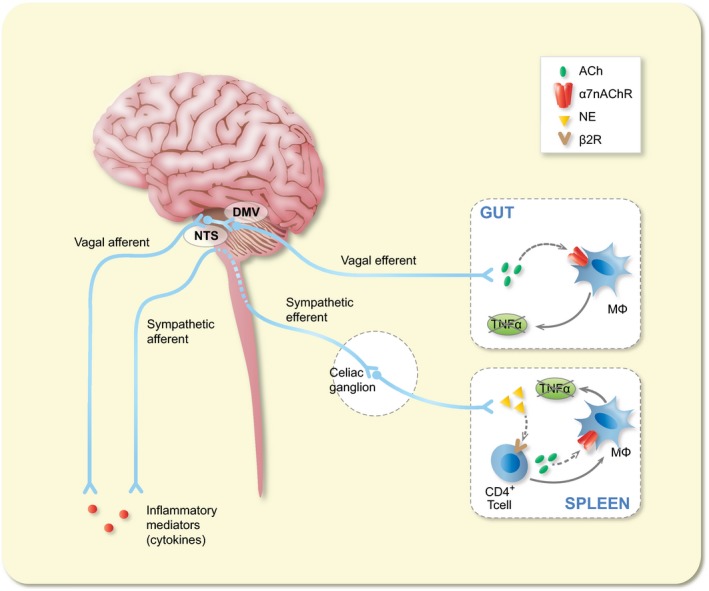Figure 2.

Schematic representation of the cholinergic anti‐inflammatory pathway. Inflammatory mediators, such as cytokines, are released by activated macrophages and other immune cells upon immune challenge. These mediators are detected by the afferent arm of the inflammatory reflex. Efferent vagus nerve cholinergic output to the spleen and gastrointestinal tract regulates immune activation and suppresses pro‐inflammatory cytokine release. Vagal nerve stimulation of the intact vagus nerve stimulates both afferent and efferent fibres. Electrical stimulation of afferent nerve fibres activates neurons in the nucleus of the tractus solitarius, leading to activation of not only efferent vagus nerves but most likely also of an adrenergic pathway resulting in the release of noradrenaline (NA) in the spleen, the major organ source of TNF and other pro‐inflammatory cytokines during endotoxemia and other inflammatory conditions. Here, NE reduces TNF production by splenic macrophages via activation of T cells releasing acetylcholine (ACh) and binding the α7nAChR
